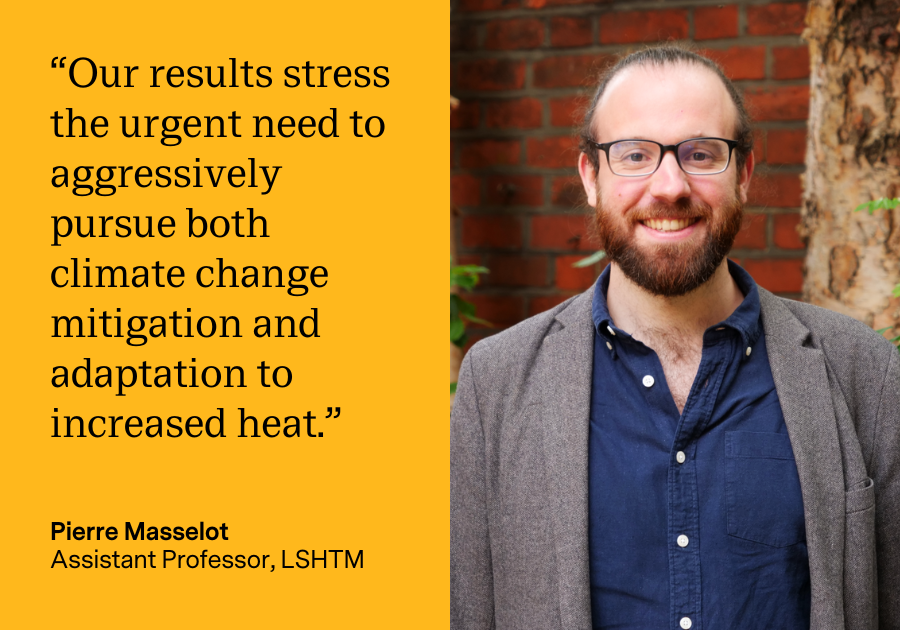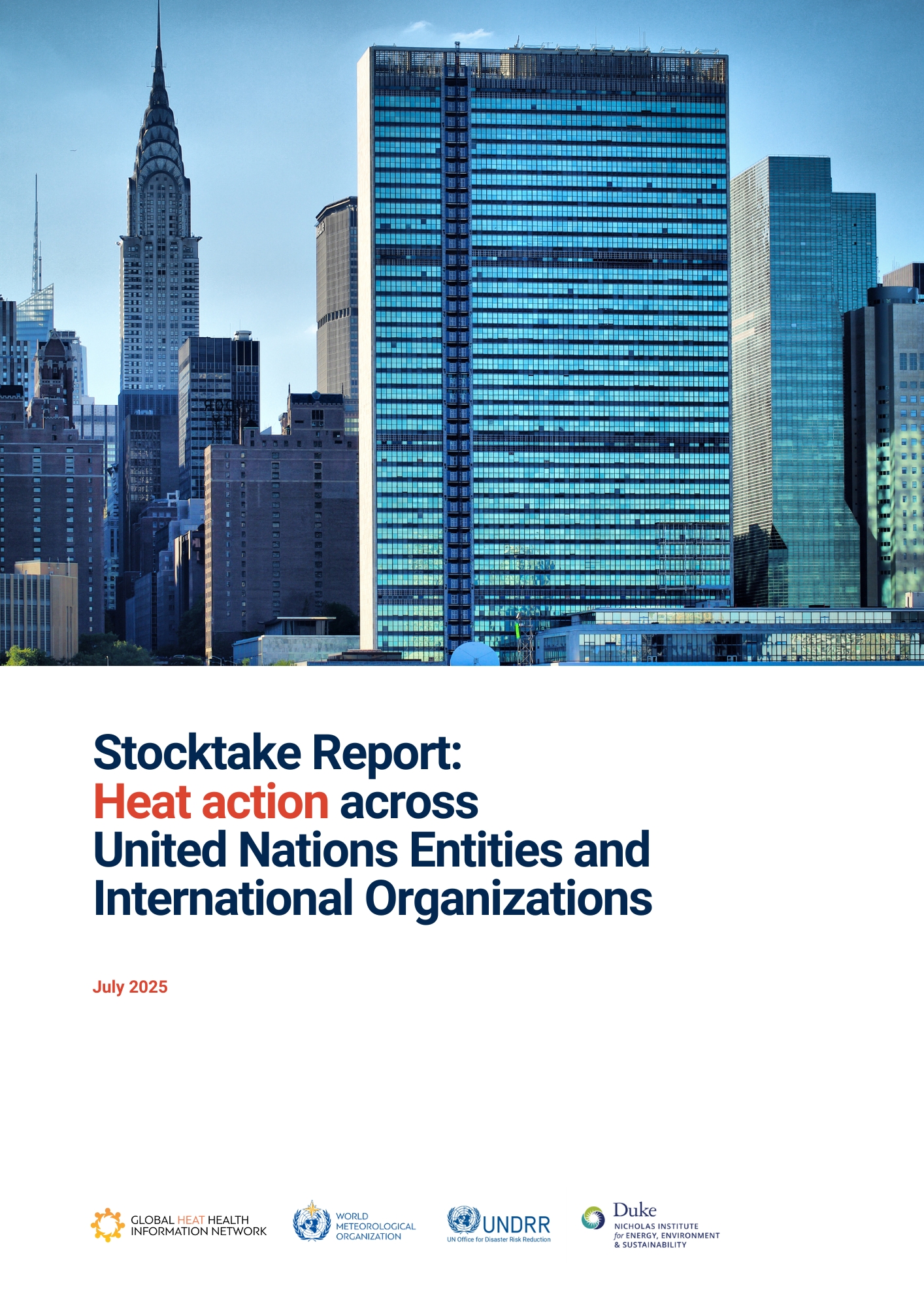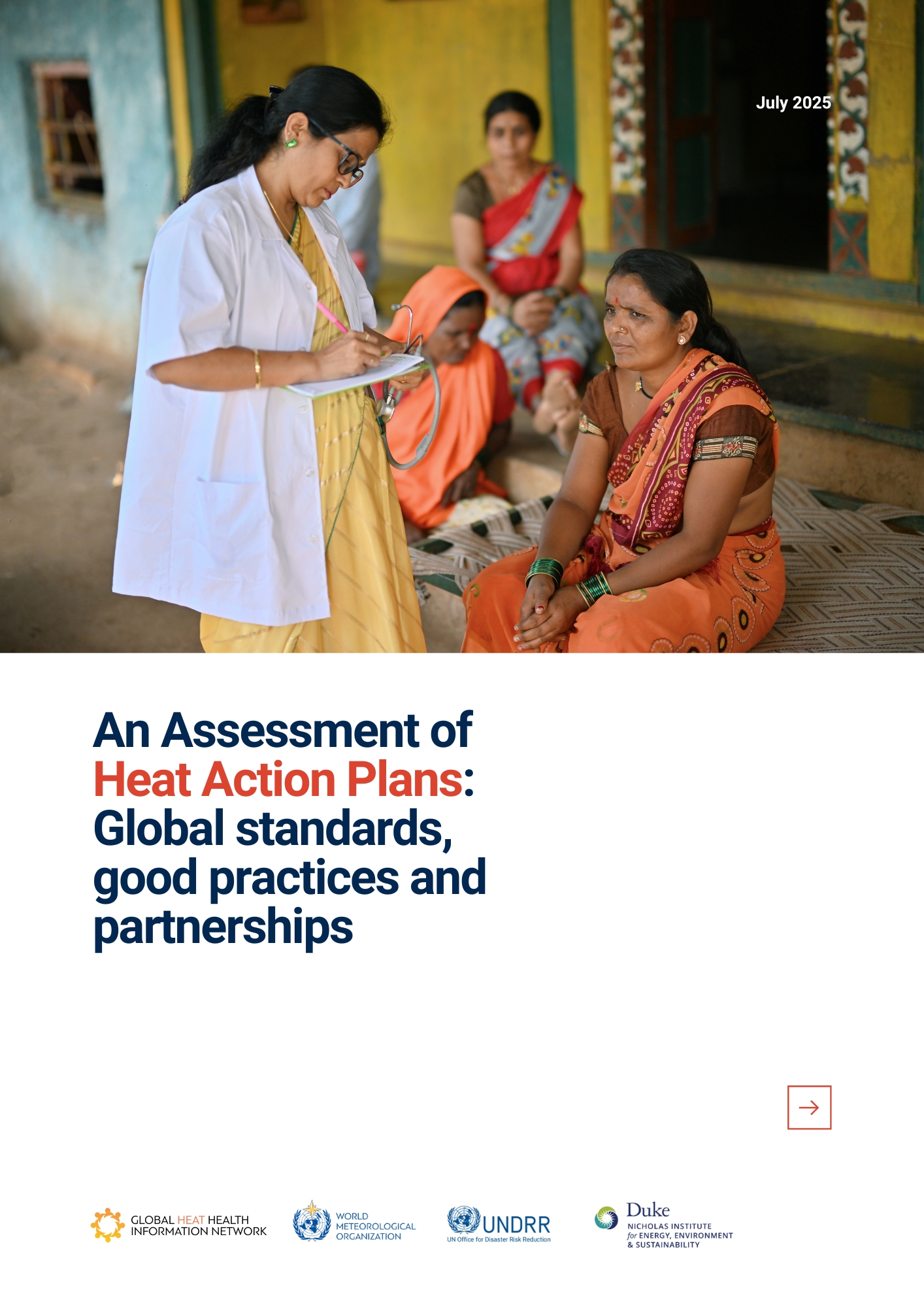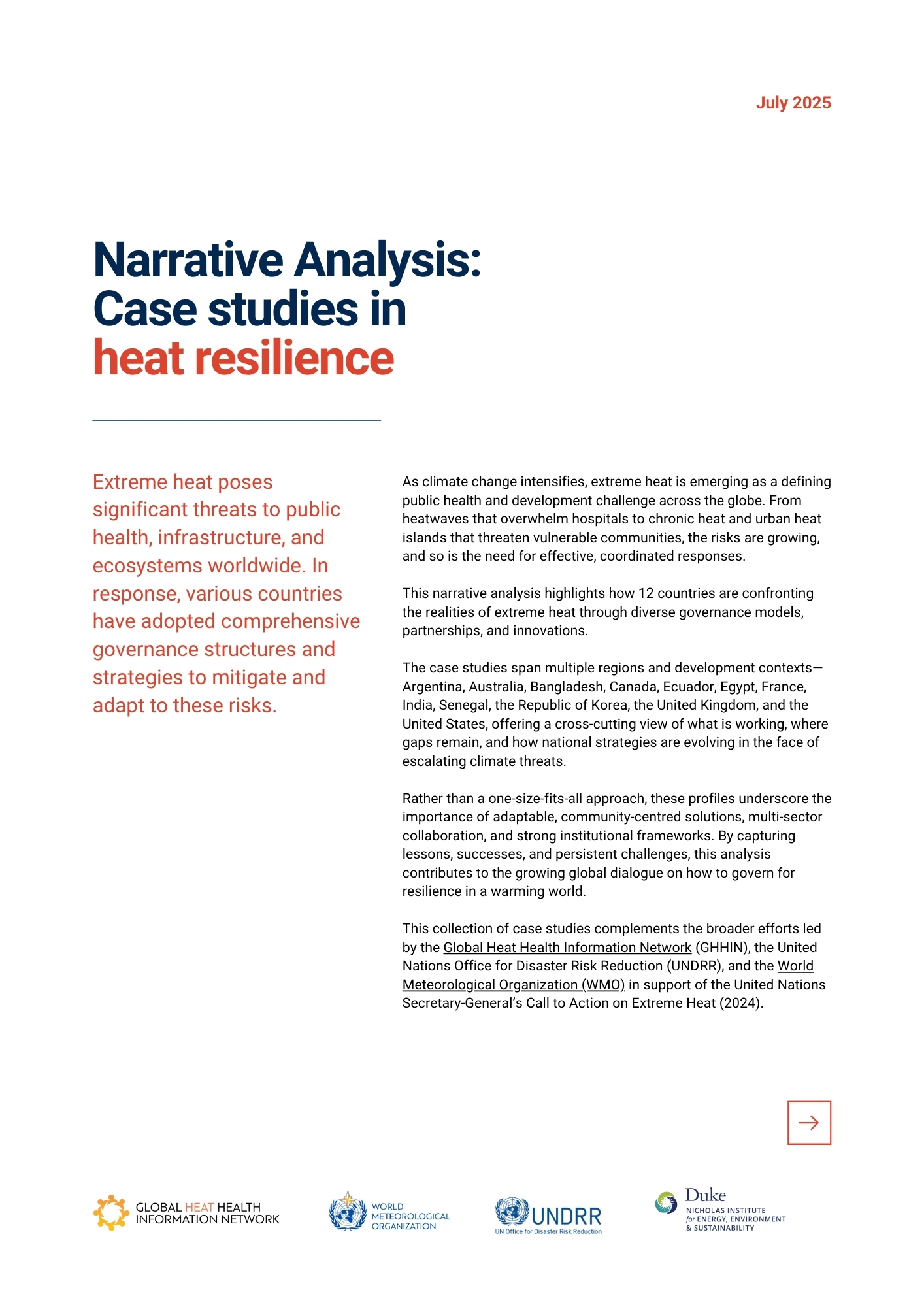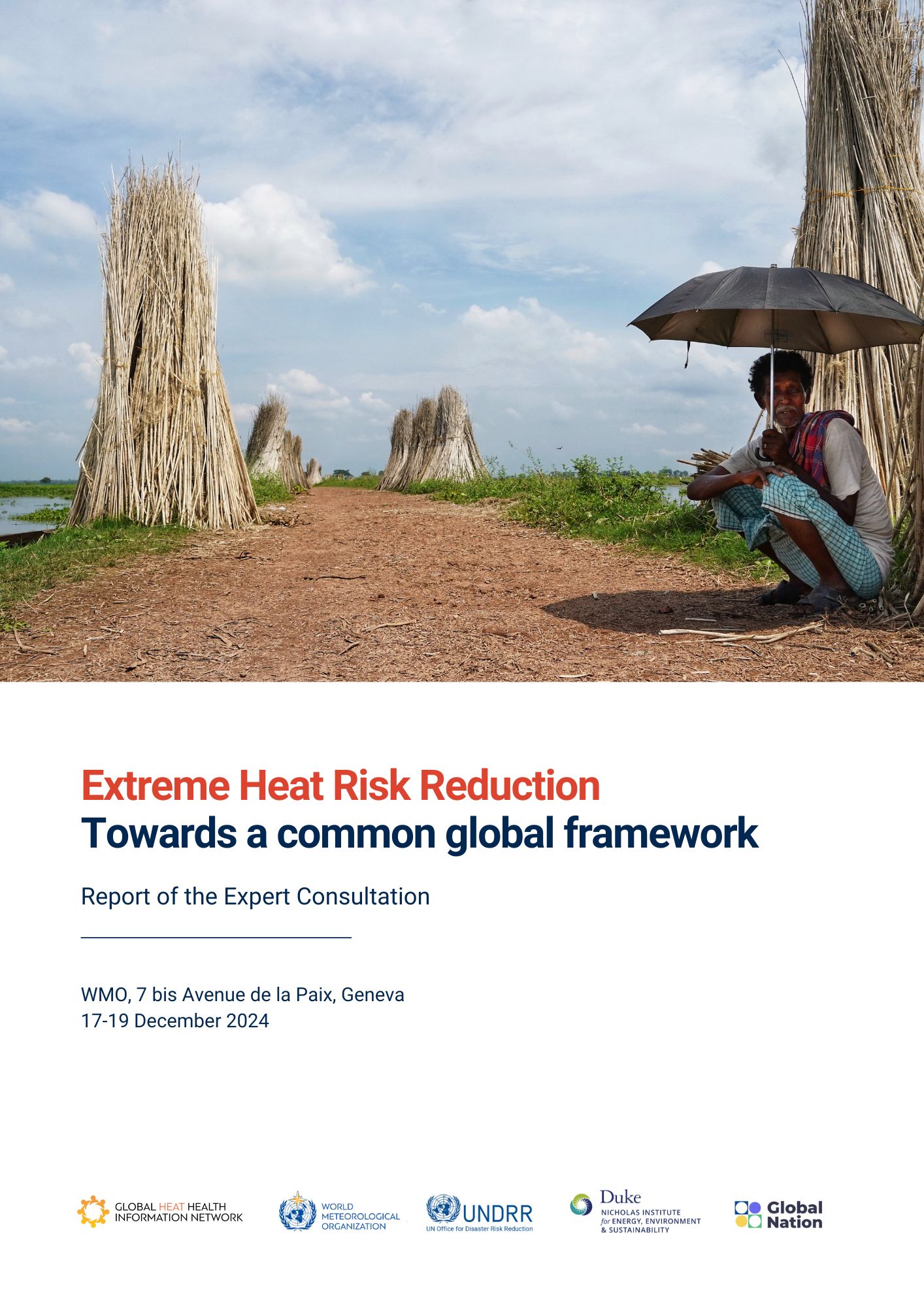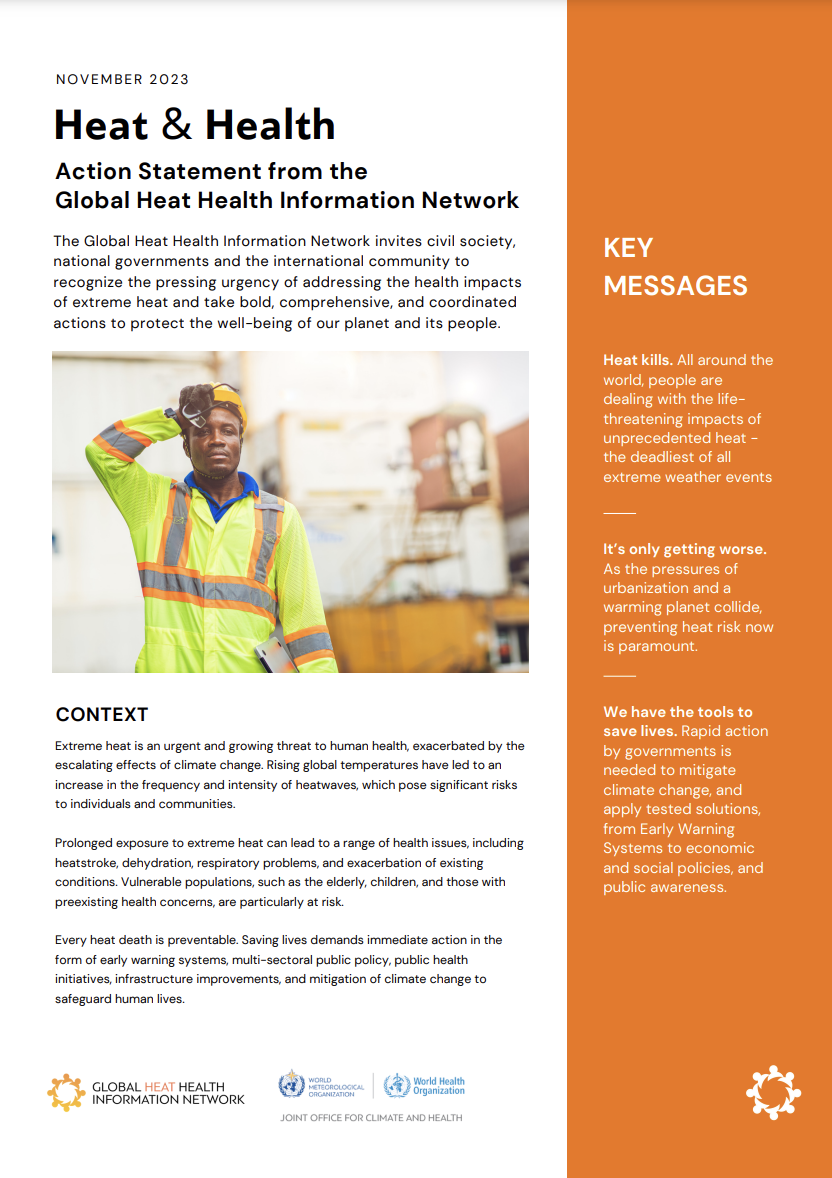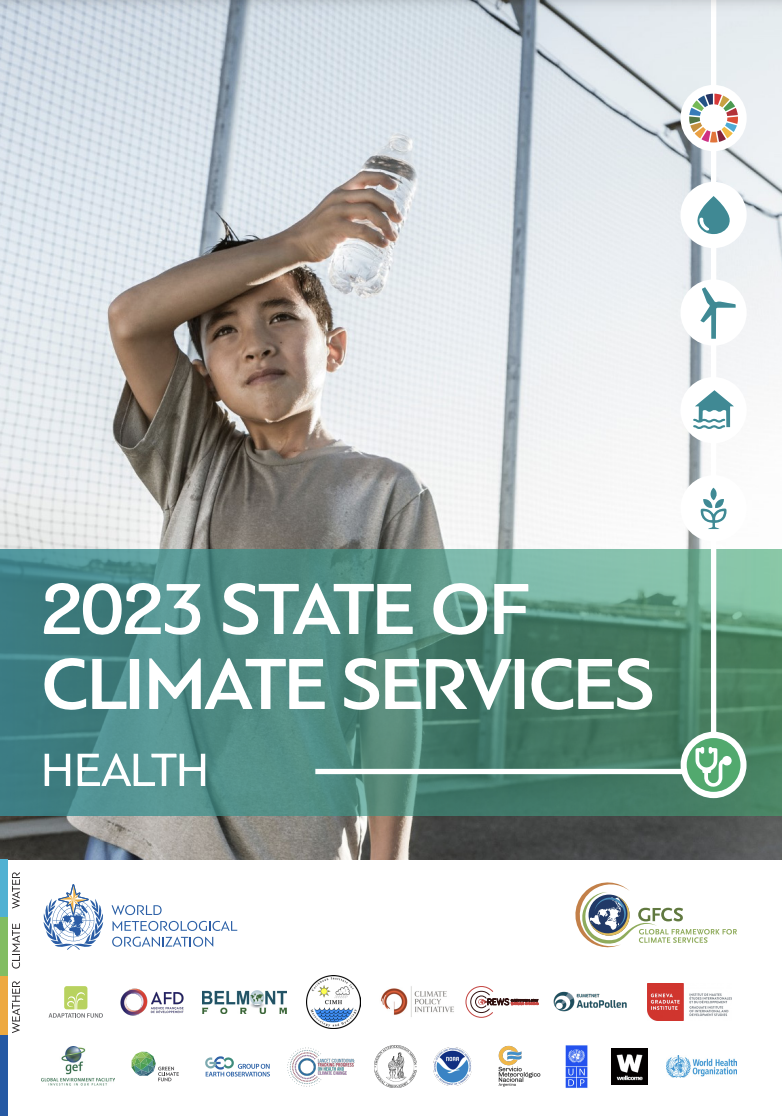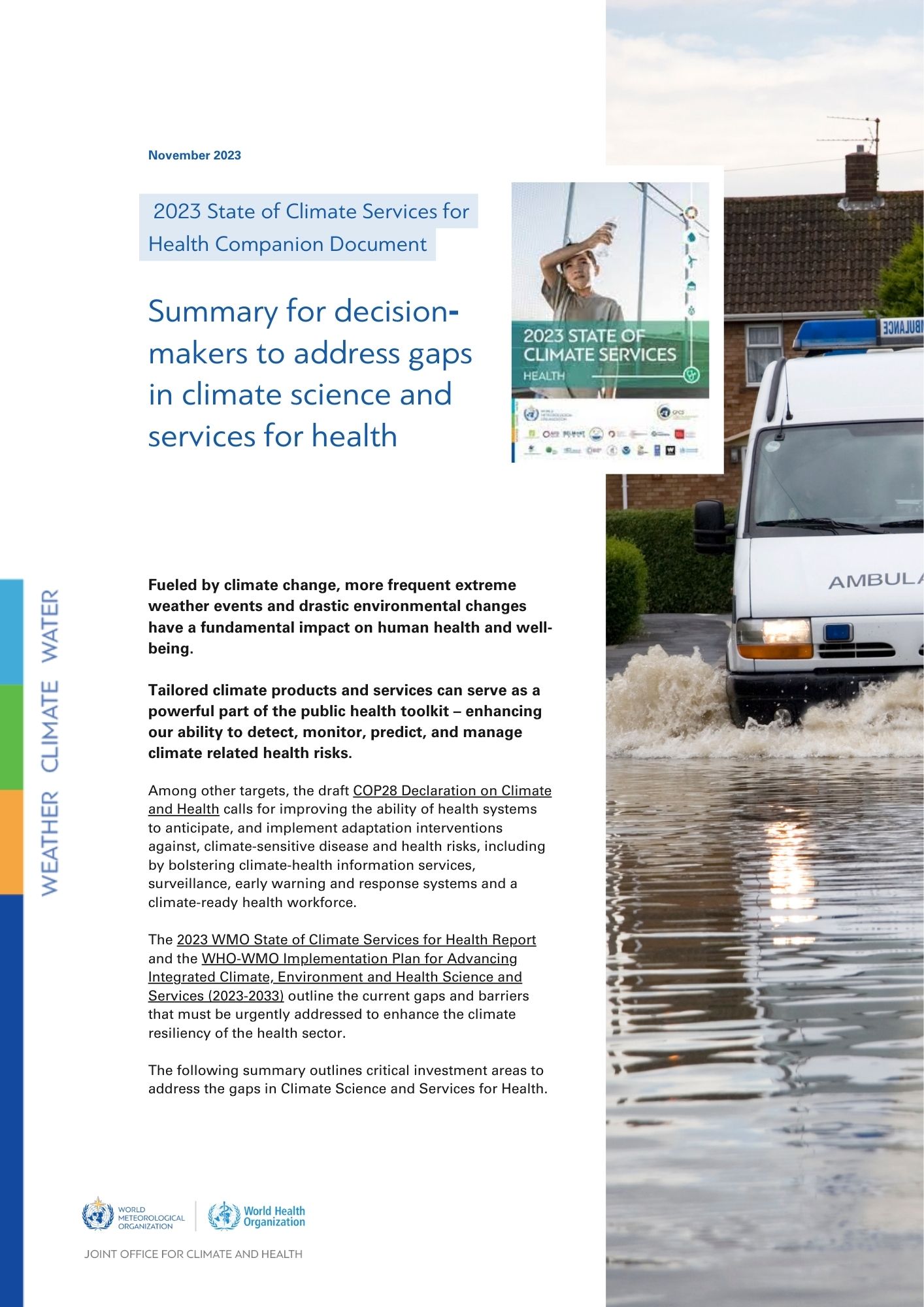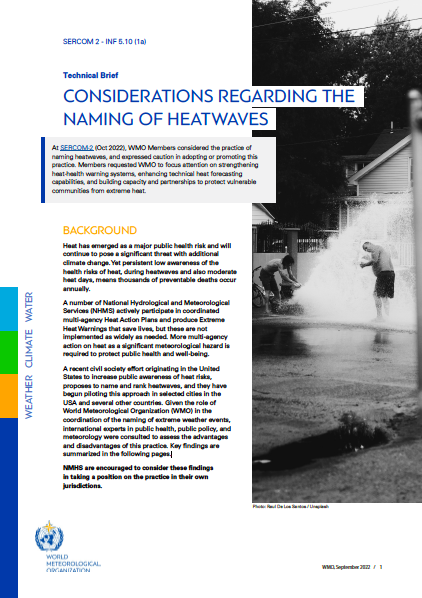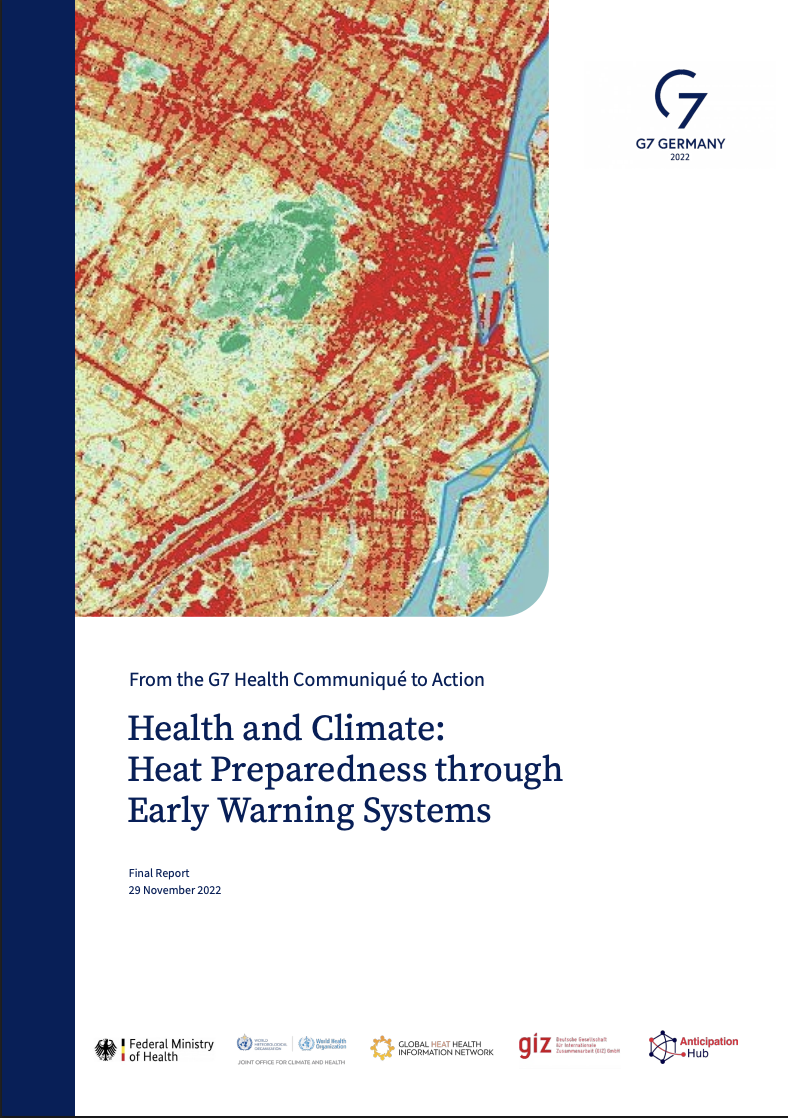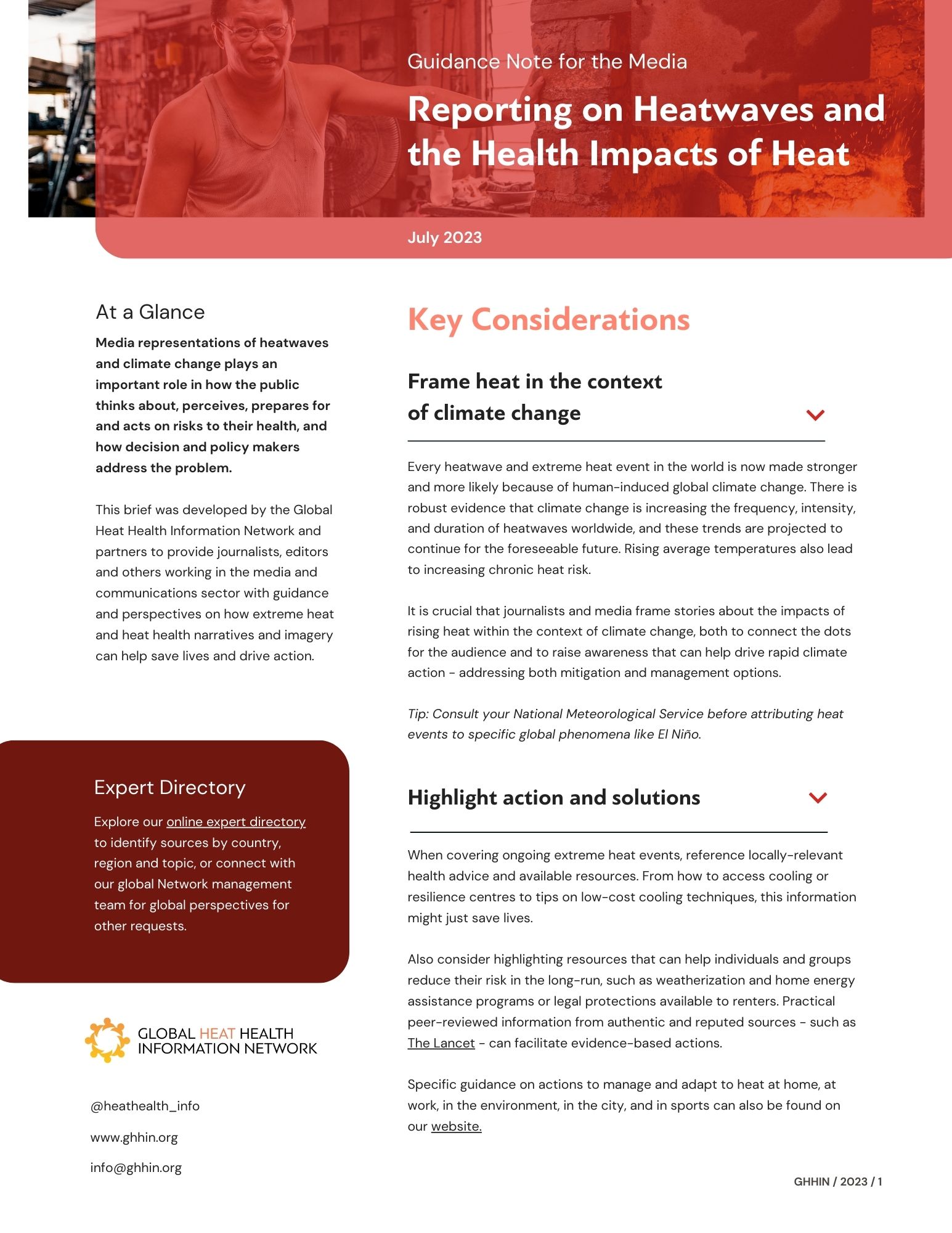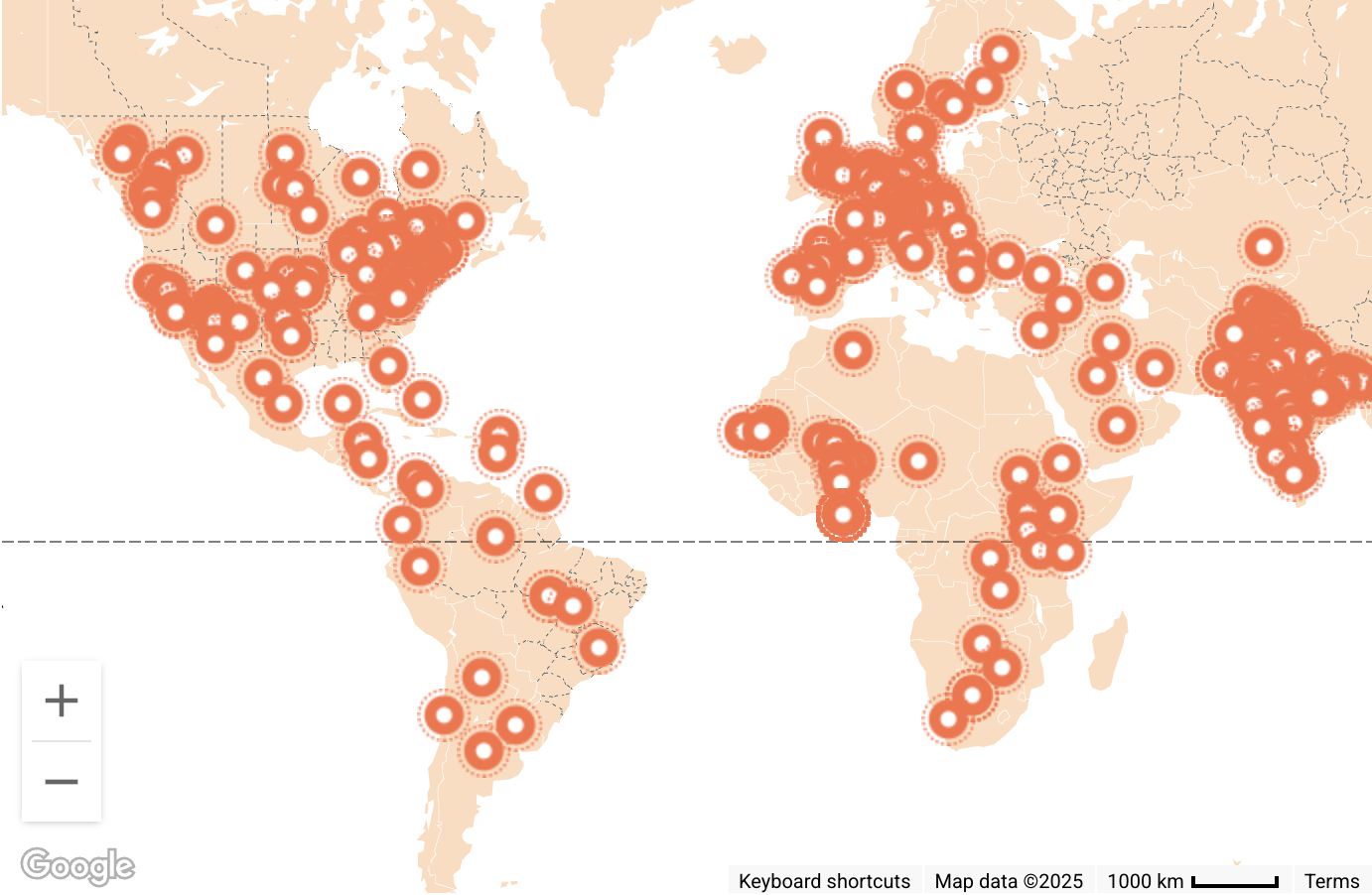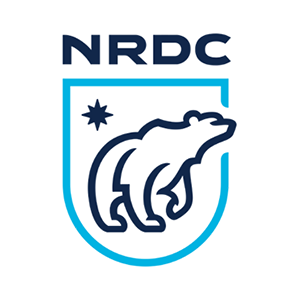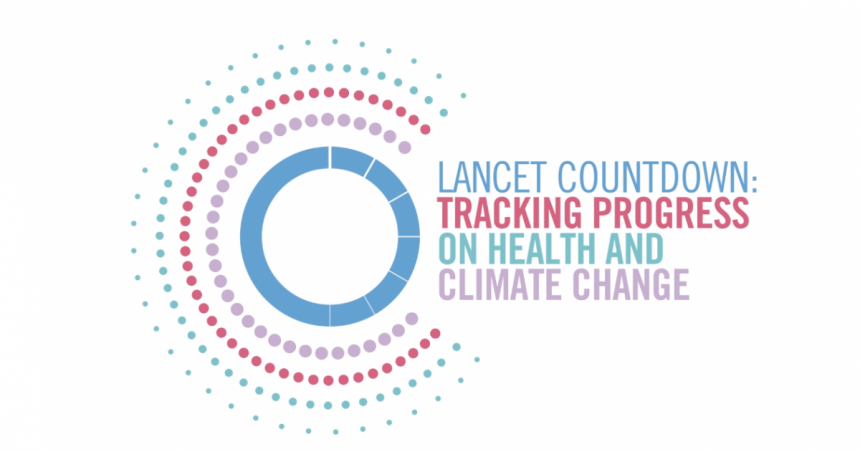An Assessment of Heat Action Plans: Global standards, good practices and partnerships
2025
As global temperatures continue to rise, the frequency and intensity of extreme heat events have escalated, posing significant risks to public health, infrastructure, and economies worldwide. While Heat Action Plans (HAPs) help to mitigate these impacts across national, regional, and local levels of governance, the lack of formal standards has led to variations in structure, purpose, and implementation among nations, regions, and municipalities. This variability often results in fragmented approaches, leading to critical gaps in funding, vulnerability assessments, and long-term resilience strategies.
This synthesis report identifies best practices and persistent challenges to provide a structured framework for improving heat resilience based on evaluations of heat action plans from six countries—Australia, Canada, France, India, the United Kingdom, and the United States. Although twelve countries were initially considered, no publicly accessible national or subnational heat action plans were identified for Argentina, Bangladesh, Ecuador, Egypt, South Korea, and Senegal.
It advocates for an adaptable governance framework, proposing that national guidance related to HAPs incorporate adaptable core elements, such as standardized heat risk definitions, clear agency roles, multi-sector coordination, and early warning systems. This foundational structure would enable cohesive planning across governance levels, equipping regions to develop context-specific HAPs that align with national resilience objectives.
The report also highlights persistent issues identified in recent evaluations, including the scarcity of dedicated funding mechanisms, inconsistent long-term planning, and limited evaluation capacities, which weaken the overall efficacy of many HAPs. By spotlighting best practices from the evaluated plans, this report provides adaptable recommendations that can help countries establish a national framework supporting sub-national plan development, thereby enabling unified, scalable responses that address both immediate and future heat risks effectively.





